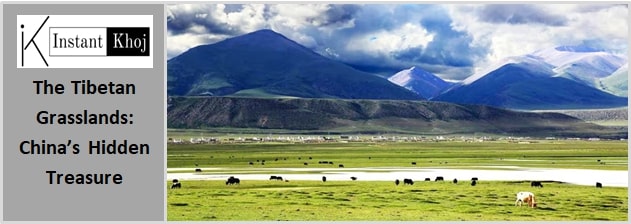Welcome to the Sacred Mountains of Japan Quiz!
This quiz is based on an article that explains the spiritual, cultural, and environmental importance of Japan’s sacred mountains, especially Mount Fuji and Mount Haku.
If you have already read the article, go ahead and start the quiz below to test your understanding!
If you haven’t read the article yet, we recommend reading it first so you can answer the questions easily and learn something meaningful.
Click here to read the article first: https://www.instantkhoj.com
Which two mountains are highlighted as sacred in Japan’s spiritual and cultural traditions?
A) Mount Tate and Mount Aso
B) Mount Fuji and Mount Haku
C) Mount Fuji and Mount Yari
D) Mount Haku and Mount Kita
Answer: B
Explanation:Mount Fuji and Mount Haku are the two most celebrated sacred mountains in Japan’s spiritual traditions.
In Shintoism, Mount Fuji is regarded as a:
A) Place of Buddhist meditation only
B) Kami (spirit) embodying beauty and strength
C) Commercial tourist site
D) Symbol of political power
Answer: B
Explanation:Shinto practitioners see Mount Fuji as a kami, meaning a sacred spirit representing beauty and strength.
What role do pilgrimage routes like the Fujisan pilgrimage path serve?
A) They are only hiking trails with no cultural significance
B) They connect sacred shrines, natural landmarks, and resting spots
C) They are modern constructions for tourists
D) They are closed to the public for preservation
Answer: B
Explanation:These ancient routes connect important religious and natural sites, used for spiritual journeys.
Yamabushi are:
A) Forest animals found on Mount Haku
B) Mountain ascetics who perform purification ceremonies
C) Tourist guides on pilgrimage routes
D) Local government officials managing the forests
Answer: B
Explanation:Yamabushi are ascetic practitioners who conduct spiritual rites combining Shinto and Buddhist practices.
Why is the conservation of forest ecosystems around sacred mountains important?
A) To promote commercial logging
B) To preserve biodiversity and maintain the sacred atmosphere
C) To build more tourist facilities
D) To clear land for farming
Answer: B
Explanation: Forest conservation preserves the natural environment that sustains both biodiversity and spiritual significance.
What challenges arise from increased tourism to these sacred mountains?
A) Improved trail conditions and more festivals
B) Trail erosion, littering, and disturbance of wildlife
C) Decrease in cultural interest
D) Reduction in pilgrimage routes
Answer: B
Explanation:High tourist traffic can damage trails, pollute areas, and disturb the natural ecosystem.
Which of the following is NOT mentioned as part of efforts to protect sacred mountains?
A) Visitor education programs
B) Trail maintenance
C) Construction of shopping malls
D) Regulations to limit environmental impact
Answer: C
Explanation:The article mentions education, trail care, and rules but not commercial building projects.
Mount Haku is considered one of Japan’s “Three Holy Mountains.” Which other mountains are part of this group?
A) Mount Fuji and Mount Tate
B) Mount Fuji and Mount Yari
C) Mount Tate and Mount Kita
D) Mount Fuji and Mount Aso
Answer: A
Explanation:The Three Holy Mountains are Mount Fuji, Mount Haku, and Mount Tate.
For Buddhist traditions, Mount Fuji is seen as:
A) A place for commercial activity
B) A place for spiritual training and enlightenment
C) A symbol of political power
D) A mountain with no spiritual meaning
Answer: B
Explanation:Buddhists use Mount Fuji as a site for spiritual practice and personal growth.
The forests and streams on Mount Haku are believed to be inhabited by:
A) Tourists
B) Commercial developers
C) Mountain deities
D) Wildlife only
Answer: C
Explanation:Mountain deities are thought to dwell in these natural areas, adding to the sacredness.
Ancient pilgrimage routes are described as:
A) Recently built for tourists
B) Centuries-old paths passed down through generations
C) Closed off for environmental reasons
D) Primarily commercial roads
Answer: B
Explanation:These paths have been used for centuries for religious pilgrimages.
Traditional festivals linked to sacred mountains often feature rites conducted by:
A) Local politicians
B) Yamabushi (mountain ascetics)
C) Commercial entertainers
D) Foreign tourists
Answer: B
Explanation:Yamabushi perform traditional purification and fire/water ceremonies during festivals.
What do cultural heritage projects focus on in relation to sacred mountains?
A) Increasing commercial development
B) Creating more tourist attractions
C) Safeguarding pilgrimage routes, festivals, and ecosystems
D) Reducing spiritual practices
Answer: C
Explanation:These projects aim to protect both cultural traditions and natural environments.
What is one environmental benefit of conserving forests around sacred mountains?
A) Increasing soil erosion
B) Lowering water quality
C) Preventing soil erosion and maintaining water quality
D) Promoting deforestation
Answer: C
Explanation: Forests help prevent erosion and keep water clean, supporting ecological health.
How do modern conservation efforts address the impact of tourism?
A) Encouraging unlimited tourist access
B) Implementing visitor education, trail maintenance, and regulations
C) Closing pilgrimage routes permanently
D) Ignoring environmental concerns
Answer: B
Explanation: Efforts focus on educating visitors, maintaining trails, and regulating access to reduce harm.





One thought on “Japan’s Sacred Mountains Quiz — Try It Now!”